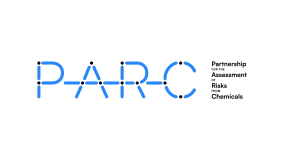Partnership for the Assessment of Risk from Chemicals PARC



Objectives
The aim is to develop next-generation chemical risk assessment to protect human health and the environment even better than before.
- Developing scientific skills that are needed to respond to the current and future challenges of chemical safety
- Providing new information, methods, and innovative tools for those responsible for assessing and managing the risk of chemical exposure
- Strengthening networks that bring together parties that are involved in risk assessment and specialized in various scientific fields
Data and methods
The PARC project consists of various separate work packages. Some of the work packages focus on managing and coordinating cooperation, building a shared science policy and increasing collaboration and awareness.
Other work packages strive to develop research and innovation to match the agreed priorities in chemical risk assessment. The research and innovation can be divided into three areas: monitoring and exposure, hazard assessment, and innovations in regulatory risk assessment.
In addition to this, the PARC project includes work packages that are focused on building a platform and capacities. This is to ensure access to the existing research and innovation capacities for the purpose of innovative chemical risk assessment. There are also three of these packages: FAIR data (Findability, Accessibility, Interoperability, and Reuse of digital assets), concepts and tools, and the building of infrastructure and capacity.
The research conducted by the Finnish Institute of Occupational Health is related to the following:
- monitoring and exposure
- hazard assessment
- innovations in regulatory risk assessment
- concepts and tools
Results and impact
The mission of the PARC project is to bring the EU closer to the goal of a pollution-free environment and closely participate in the promotion of sustainable development in Europe.
The data researched at the Finnish Institute of Occupational Health can be used in decision-making based on scientific research.
Learn more about the PARC project
Print the PARC consortium brochure (poster available in multiple languages)
In other media
Our experts

Tiina Santonen
Research group
Piia Taxell, senior specialist
Selma Mahiout, senior specialist
Pasi Huuskonen, senior specialist
Simo Porras, specialist researcher
Milja Koponen, specialist researcher
Sanni Uuksulainen, senior specialist
Mikko Poikkimäki, researcher
Kukka Aimonen, researcher
Tomi Kanerva, senior specialist
Eero Lantto, researcher
Jonna Weisell, researcher
Partners
The PARC project is very extensive. It has 200 partners from 28 countries. The partners include agencies of the European Commission, ministries of Member States, the European Chemicals Agency (ECHA), the European Food Safety Authority (EFSA), the European Environment Agency (EEA) and several research bodies, agencies, and universities.
Finnish participants in the PARC project are the Ministry of Social Affairs and Health (STM), the Finnish Institute of Occupational Health, the Finnish Institute for Health and Welfare (THL), the Finnish Safety and Chemicals Agency (TUKES), the Finnish Food Safety Authority (FFA), the Finnish Environment Institute (SYKE) and the University of Oulu (UOULU). In addition to this, the aim is to involve several interest groups to ensure that the distribution of information is as extensive and efficient as possible. New members can also be included in the PARC project during the project period, with certain limitations.
In Finland, the PARC project has its own national hub that takes care of the cooperation between the project members and interest groups. One purpose of the project is to ensure that the PARC activities are in line with national needs. The Finnish PARC national hub activities are coordinated by the Finnish Institute of Occupational Health.
Funding
The project is funded by Horizon Europa and the Finnish Institute of Occupational Health.



